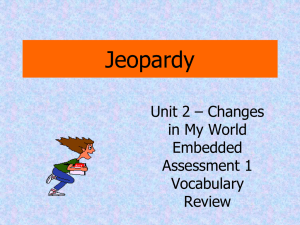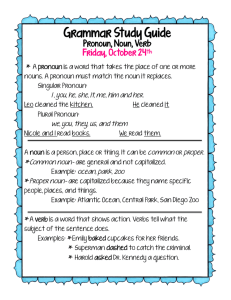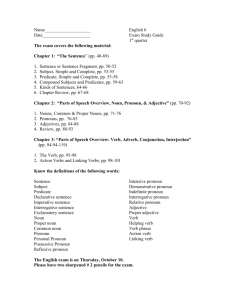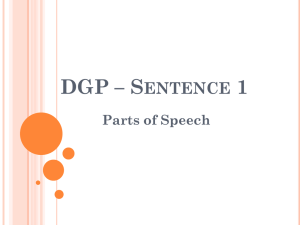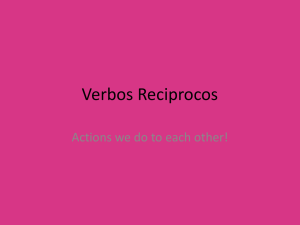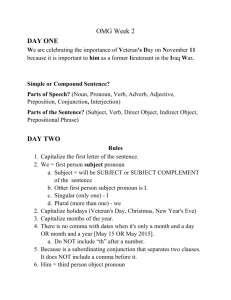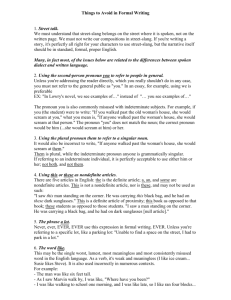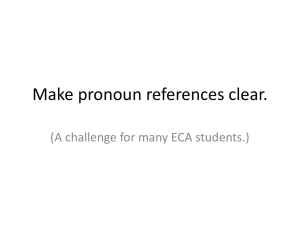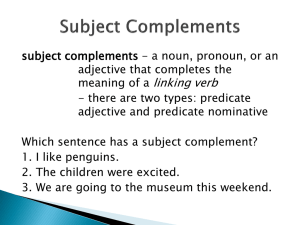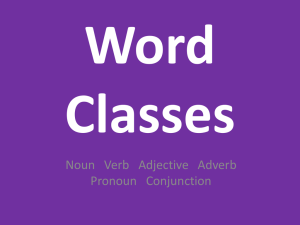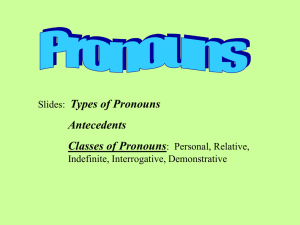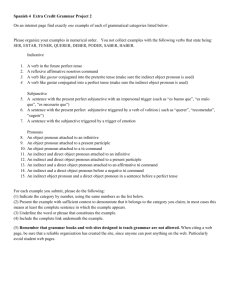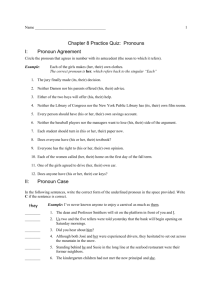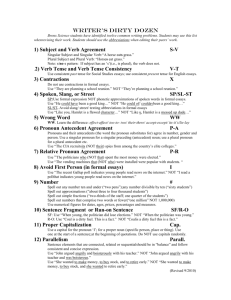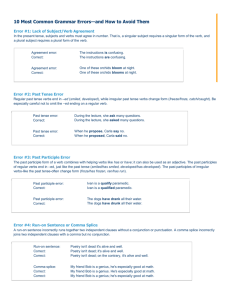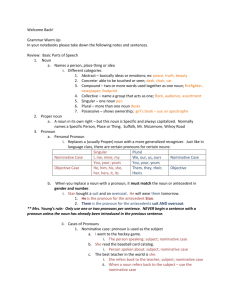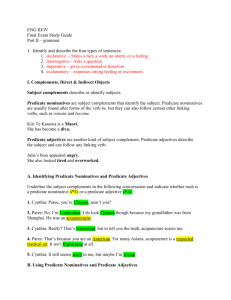Short Story
advertisement
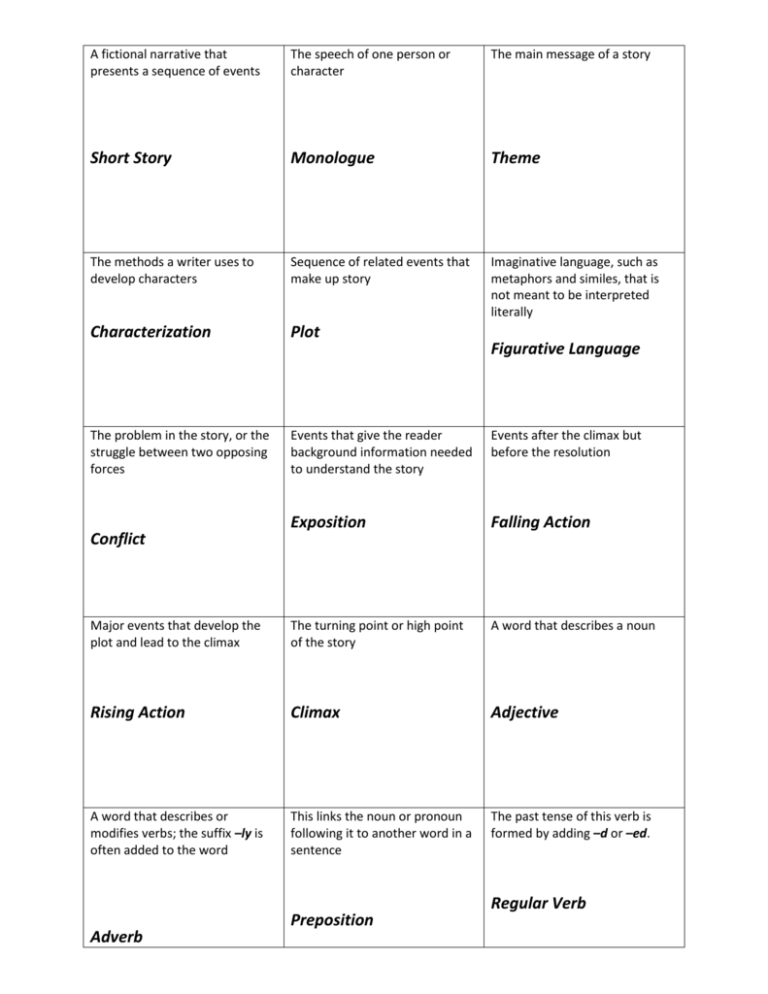
A fictional narrative that presents a sequence of events The speech of one person or character The main message of a story Short Story Monologue Theme The methods a writer uses to develop characters Sequence of related events that make up story Imaginative language, such as metaphors and similes, that is not meant to be interpreted literally Characterization Plot The problem in the story, or the struggle between two opposing forces Events that give the reader background information needed to understand the story Events after the climax but before the resolution Exposition Falling Action Major events that develop the plot and lead to the climax The turning point or high point of the story A word that describes a noun Rising Action Climax Adjective A word that describes or modifies verbs; the suffix –ly is often added to the word This links the noun or pronoun following it to another word in a sentence The past tense of this verb is formed by adding –d or –ed. Conflict Adverb Preposition Figurative Language Regular Verb The past tense of this verb is formed in different ways than by adding –d or –ed. This part of a sentence contains a verb and tells what the subject is doing This takes the place of a noun Pronoun Irregular Verbs Predicate This is the part of the sentence that is a noun or pronoun that the sentence is about Type of personal pronoun that uses I and we Type of personal pronoun that uses you First Person Pronoun Second Person Pronoun Type of personal pronoun that uses he, she, it, they and them This has three characteristics: begins with a capital letter, includes an end mark, and contains a subject and predicate A group of words with only one subject and a predicate that contains a complete thought Third Person Pronoun Complete Sentence Simple Sentence Subject This is used in a list to indicate that similar words could follow Etc.
